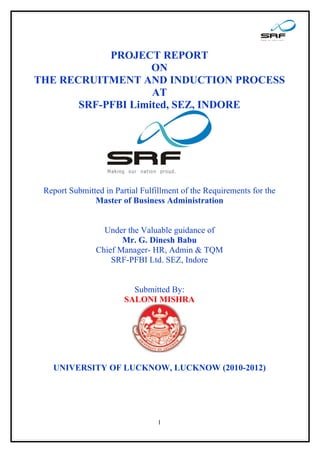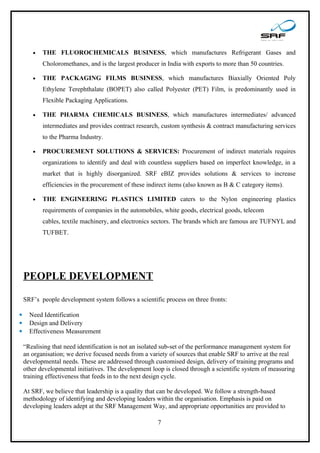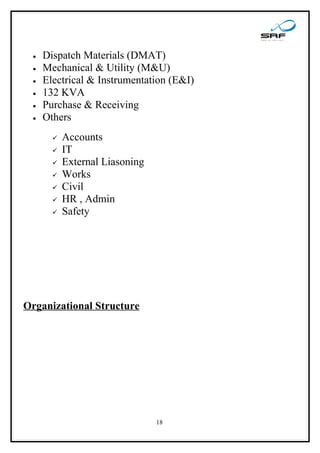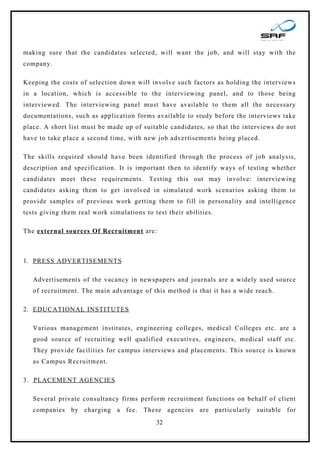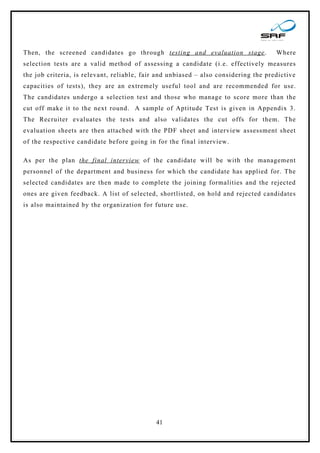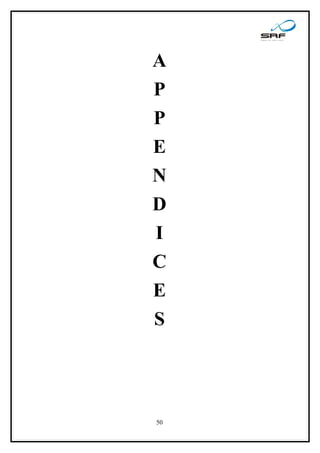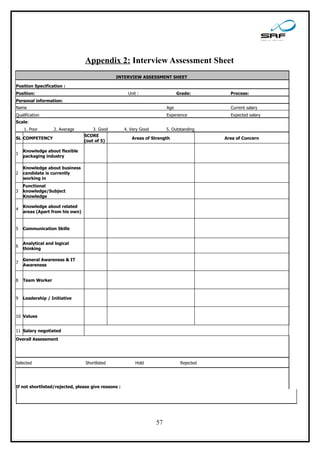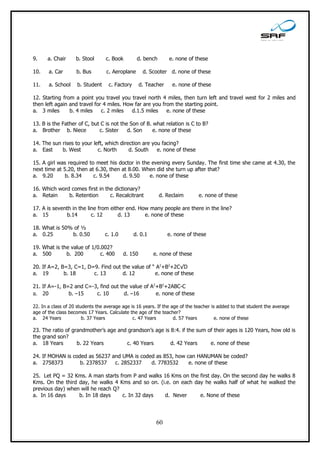This document provides an overview of SRF PFBI Limited's recruitment and induction process. It discusses SRF's core businesses, values, and certification. SRF PFBI Limited is a packaging films manufacturing facility located in a Special Economic Zone in Indore, India. The document then describes SRF's recruitment and induction methodology and acknowledges those who provided guidance and support for the project.
